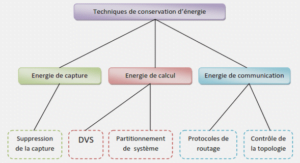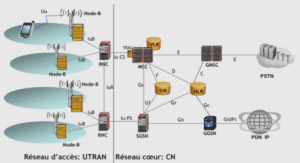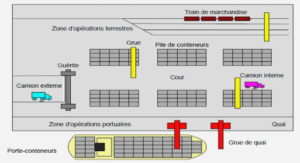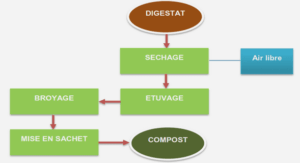The metrology of compliant parts without specialized fixtures is a challenging task in the transportation industry especially in the aerospace and automotive fields. At the end of the manufacturing process, engineers must verify if the produced part satisfies the functional requirements under a given tolerance. Geometric dimensioning and tolerancing (GD&T) standards like ASME Y14.5 (2009) and ISO 10579 (2010) consider that, by default and unless otherwise specified, the inspection of components must be made at Free State without applied force during the inspection. Many fixtureless inspection methods belonging to rigid parts have been published (Yadong and Peihua, 2004). In the case of compliant parts there are still no viable solutions. Due to dimensional variations, gravity loads, residual stress induced distortion and/or assembly force, compliant parts in a Free State condition may have a different form than their CAD models. Typically, the metrology of such parts requires a special approach where expensive and specialized fixtures are needed to constrain dedicated and follow the component during the inspection. These specialized jigs pose difficulties and significant costs to industry. For example, currently at Bombardier Aerospace Inc. the required preparation time for the inspection of compliant parts is about 50-60 man-hours . Therefore, the need for Automatic inspection that is faster and free of human error becomes essential in order to keep the global manufacturing market competitive.
The goal of this paper is to distinguish between geometrical defects due to an error in the manufacturing process, and deformations due to the flexibility of parts in the case of thin shells in order to ascertain whether the tolerance of the manufactured part fits the CAD model or not. To deal with this issue, the IDB-CTB method is developed. This new method takes advantage of the compliant parts’ Gaussian curvature properties (one of the intrinsic properties of the geometry), and combines it with a statistical test based on the extreme value analysis techniques as an identification module which respects the following assumptions:
• The assembly, when scanning, allows elastic deformations greater than the required tolerance profile.
• Inspection is limited to the defects in the surface profile as defined by ASME Y14.5 (2009).
• Defects are dent shapes and/or waviness profile deviations as shown in Figure 2.2.
• Parts materials are considered isotropic with well-known characteristics.
• The manufactured part is a sheet metal completely scanned and represented as a point cloud (x,y,z)
• The point cloud represents a significant coverage of the original surface. No curvature is calculated at areas of the object surface not covered by the point cloud.
In 2010, Ascione and Polini proposed a fixture assembly methodology that enables both to simulate the mating part interface and to locate the part in a coordinate measuring machine’s working volume. Then, they used a method for the evaluation of the actual surface with regard to its nominal model based on their Euclidean distance. Finally, a method based on a finite element analysis was proposed to evaluate the effects of the measuring force (induced by the touch probe on the inspected surface) on the measurement results. For the alignment of deformable parts that do not require any fixtures, Weckenmann et al. (2006), as well as Jaramillo et al. (2009), proposed an approach based on a finite element method to obtain a physical deformation of the original CAD model, and radial basis functions to approximate this deformation faster and in real time, opening the door to the on-line inspection of deformable parts. Caulier (2010) proposed a general free-form stripe image interpretation approach on the basis of a four-step procedure: (i) comparison of different feature-based image content description techniques, (ii) determination of optimal feature sub-groups, (iii) fusion of the most appropriate ones, and (iv) selection of the optimal features. She applies this technique to a broader range of surface geometries and types, i.e. to free-form rough and free-form specular shapes. Caulier and Bourennane (2008) proposed a general free-form surface inspection approach relying on the projection of a structured light pattern and the interpretation of the generated stripe structures by means of Fourier-based features. Lin et al. (2008) explored automated visual inspection of surface defects in a light-emitting diode (LED) chip by applying wavelet-based principal component analysis (WPCA) and Hotelling statistic (WHS) approaches to integrate the multiple wavelet characteristics. The principal component analysis of the WPCA, and the Hotelling control limit of WHS, is individually judging the existence of defects. Cristea (2008) presents aspects of the design of an intelligent modular inspection system. This system consists of grouping the parts based on the relation between dimensional inspection process characteristics and modular design of all inspection equipment’s with a high universality and flexibility degree. Kase et al. (1999) presented a local and a global evaluation method for the shape error of free form surfaces. The local evaluation method is based on the modification of principal curvatures between the CAD and the manufactured surfaces. The global evaluation method is based on the average normal vectors for the characterization of the representative direction of the surface portions.
In 2011, Abenhaim and Tahan developed the Iterative Displacement Inspection (IDI) algorithm. The IDI allows for the surface profile inspection of a compliant part without the need of a specialized jig. The method works through a comparison of two sets of points, one from the mesh of the CAD model, and one from the scanned manufactured part, despite the significant difference in their respective geometries. The method outlined operates by iteratively deforming the smooth CAD mesh until it matches the scanned part without profile deviation or measurement noise. This matching process is made possible with the introduction of the identification method, which enables the effects of profile deviations to be distinguished from the deformations due to the positioning of the part and its flexibility. Aidibe and Tahan (2012) proposed the use of the statistical maximum normed residual test to improve the aforementioned identification task and automatically set the identification threshold. Compared with the original IDI identification module, the results indicate that the proposed method reduces type I and type II errors. In addition, in contrast to the IDI’s identification method, the proposed method does not require a user-specified threshold based on a trial and error process. Radvar-Esfahlan and Tahan (2012) proposed the Generalized Numerical Inspection Fixture (GNIF) algorithm. By taking advantage of the geodesic distance metric properties, GNIF uses the imposition of boundary conditions into a finite element (FE) model of the nominal CAD model to conform it to the scanned part and automatically determine the corresponding points between them.
Following the IDB-CTB approach which is a new method for fixtureless inspection of compliant parts will be presented.
Inspection of Deformable Bodies by Curvature estimation and the ThompsonBiweight test (IDB-CTB) approach
In order to compare deformable bodies, one should take advantage of their intrinsic geometries because they remain unchanged during isometric deformations. The IDB-CTB proposed method is based on the Gaussian curvature estimation, which is invariant under isometric deformations, combined with a statistical identification module to distinguish the defects due to manufacturing process from the deformation due to the flexibility of a given part. The proposed identification module considered the defects as ‘outliers’ and combines the Thompson extreme value statistical test (Thompson, 1985) with the biweight mean and standard deviation estimator technique (Hoaglin et al., 1983) in order to detect them. In this section the main steps of the proposed method will be presented.
|
Table des matières
INTRODUCTION
REVUE DE LA LITTÉRATURE ET STRUCTURE DE LA THÈSE
CHAPITRE 1 DISTINGUISHING PROFILE DEVIATIONS FROM
A PART’S DEFORMATION USING THE MAXIMUM
NORMED RESIDUAL TEST
1.1 Abstract
1.2 Introduction
1.3 Background
1.4 Methodology
1.5 Results
1.6 Conclusion
1.7 Acknowledgments
CHAPITRE 2 THE INSPECTION OF DEFORMABLE BODIES
USING CURVATURE ESTIMATION AND
THOMPSON-BIWEIGHT TEST
2.1 Abstract
2.2 Introduction
2.3 Rigidity/Flexibility definition
2.4 Background
2.5 Inspection of Deformable Bodies by Curvature estimation and the ThompsonBiweight test (IDB-CTB) approach
2.5.1 Registration and matching (Step 1, Step 2)
2.5.2 Curvature estimation method (Step 3)
2.5.3 Identification method – The Thompson-Biweight test (Step 4)
2.5.4 IDB-CTB approach
2.6 Case Studies and validation
2.6.1 Fist set: Simulated case studies
2.6.2 Second set: Experimental case study
2.6.3 Results
2.7 Conclusion
2.8 Acknowledgments
CHAPITRE 3 THE COHERENT POINT DRIFT ALGORITHM ADAPTED
FOR FIXTURELESS DIMENSIONAL INSPECTION
OF DEFORMABLE BODIES
3.1 Abstract
3.2 Introduction
3.3 Background
3.4 Methodology
3.4.1 Prealignment
3.4.2 Initialization of parameters that will be optimized
3.4.3 Optimization of the parameters λ and β:
3.4.4 The Thompson-Biweight test identification module:
3.4.5 Summary of the proposed method
3.5 Case studies and validation
3.5.1 Description of the case studies
3.5.2 Results and discussion
3.6 Conclusion
3.7 Acknowledgments
CONCLUSION
![]() Télécharger le rapport complet
Télécharger le rapport complet






